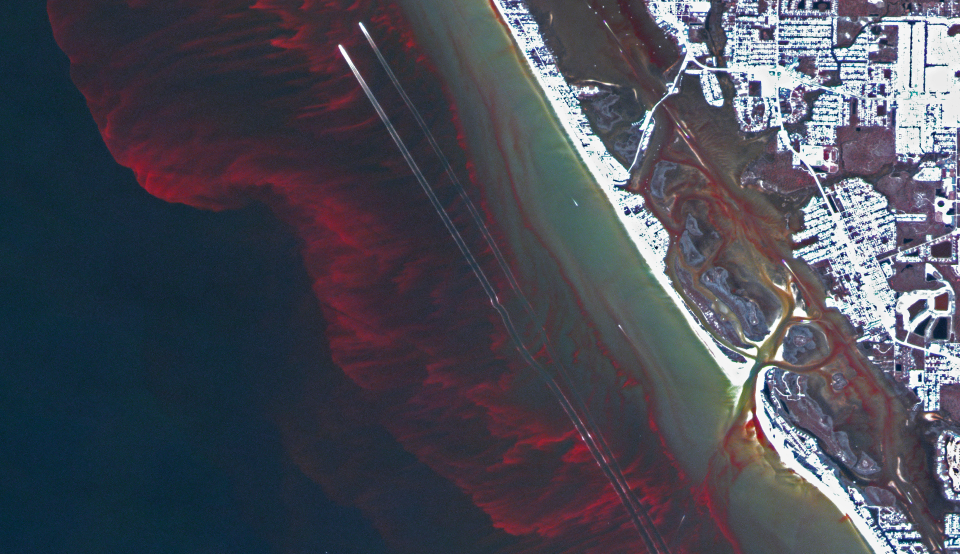Gepubliceerd op 31 maart 2023
Blooms of the harmful algae Karenia brevis occur regularly along the west coast of Florida, where they can add a green, brown, red, or black hue to the water. But scientists have had difficulty using satellites to observe these blooms—commonly called “red tide” events—in areas close to beaches and inside small bays. Researchers at the University of South Florida (USF) found one way to overcome that challenge.

This false-color image shows the west-central coast of Florida on February 26, 2023, during a red tide event that began in October 2022. The image is based on data from a Planet Labs SuperDove satellite of the PlanetScope constellation. The data were made available through NASA’s Commercial SmallSat Data Acquisition (CSDA) Program.
To the human eye (and in natural-color satellite imagery) this bloom would appear greenish and difficult to see amid the dark nearshore waters. Yao Yao, a marine science graduate student at USF, applied a processing technique to the 3-meter-resolution SuperDove data to enhance the visibility of the bloom. Yao could also capture and track the bloom’s fine details using images acquired over the same area every one to two days.
As a result of Yao’s image processing, areas with Karenia brevis appear red in the false-color image. Most of the bloom is offshore, beyond the wakes caused by two ships. Also visible are some of the bloom’s more subtle details, including elongated strips and meanders near beaches and inside the Lemon Bay Aquatic Preserve in Charlotte County.
“These fine-scale image features are invisible in traditional satellite images or in SuperDove images without color enhancement,” said Yao, who is working with colleagues at USF to develop methods to better monitor and understand red tides.
The Lemon Bay Aquatic Preserve provides habitat for fish and invertebrates and recreation opportunities for people, all of which can be affected by red tide. Karenia brevis blooms produce neurotoxins that can cause skin irritation and respiratory problems, particularly for people prone to asthma and other lung diseases. It can also harm aquatic animals. During this bloom, there were reports of dead fish in Pinellas, Manatee, Sarasota, Charlotte, Lee, and Collier counties.
Red tide typically occurs between August and December but can also occur outside of that timeframe. By early March 2023, measurements showed that concentrations of Karenia brevis off the coast of Charlotte County had lowered (compared to February), but they remained high in some locations.
Source:
NASA Earth Observatory. (2023d, March 30). Putting the Red in “Red Tide.”